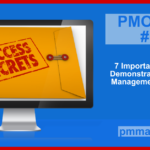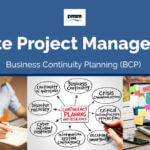The convergence of project management and customer experience has become a crucial factor in today’s corporate environment, contributing to the success of organizations worldwide. These two areas, formerly considered independent organizations with different goals, are now acknowledged as essential parts of a comprehensive plan for providing excellent goods and services and building long-lasting connections with clients.
The Project Management Evolution
Project management was once thought of as a collection of approaches and procedures meant to guarantee the effective accomplishment of projects within predetermined parameters, such as scope, time, and budget. In the cause of evolutionary change in the corporate world, a paradigm change occurred in the project management niche due to the changing dynamics of the corporate environment.
The Importance of Customer Experience in Strategy
As seen in the global project management sector, there was a shift in the Customer Experience (CX) field. A consumer’s interactions with a brand are included in the customer experience, which has grown from being a minor inconvenience to a critical business need. It became evident that great customer experiences directly relate to client loyalty, satisfaction, and business expansion.
Oftentimes, companies design fitting methods that serve their current purpose. One of the popular independently created methods is “standard design thinking,” which has more to do with the repetition of a particular technique and the co-creation of a new one. By doing this, companies would facilitate working customer-friendly solutions that advocate, nurture, and promote the company’s activities during and after it is introduced to the public.
The Nature of Interconnections
1. Alignment with Customer Needs
In the past, project management prioritized achieving project objectives over considering particular client demands. Development: modern project management techniques strongly emphasize a customer-centric strategy, ensuring that projects are started with the client’s expectations.
2. Effective Approaches for Adaptability
Conventional project management techniques could have been more flexible and more adaptable to the ever-shifting client needs. Practical approaches in project management development emphasize flexibility and response to shifting client needs, encouraging more adaptable project-carrying techniques.
3. Collaboration and Communication
In the past, project managers frequently just communicated with their teams and gave little thought to other stakeholders, e.g., clients. This is unlike what we have today, where these managers are more detailed in their briefs.
4. Continuous Improvement
Devolution. Teams can revise and improve project deliverables in real-time with the help of practical approaches, which encourage iterative processes and frequent feedback loops. This helps to improve the customer experience continuously.
5. Resource Optimization
Development. To guarantee that final goods or services meet or surpass client expectations, modern project management entails resource optimization and project success.
Deploying the use of Technology
Technological innovations facilitate the cumulative customer experience and project management. The smooth integration of different disciplines is facilitated by project management systems prioritizing collaboration, real-time data analytics, and customer feedback platforms. These technologies enable firms to remain responsive, connected, and aligned with client expectations throughout a particular project.
Obstacles, Solutions, and The Way to Long-Term Achievement
Although there are many advantages to the collaboration of project management and customer experience, there could also be difficulties. Alignment may be hampered by siloed techniques, in which separate companies function independently. Organizations need to cultivate cross-functional collaboration and create a customer-centric culture to address these difficulties effectively.
Conclusion
The convergence of project management and customer experience is more than just a technique; it signifies a fundamental change in organizational philosophy. It has become evident that companies that understand and take advantage of these disciplines’ connections set themselves up for long-term success.
Effective project management techniques must be incorporated to adapt, innovate, and provide unmatched client experiences in a business environment that is constantly evolving as consumer expectations continue to rise.






